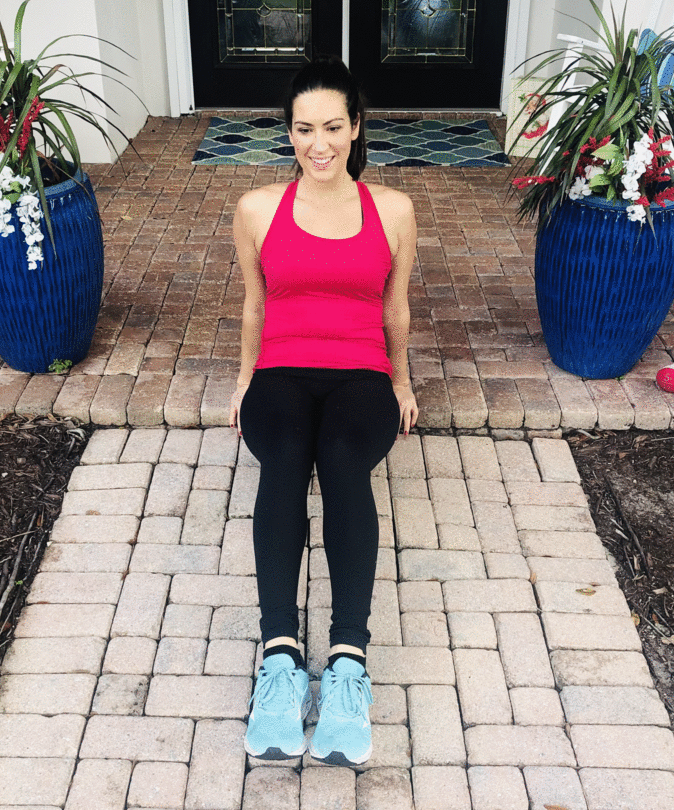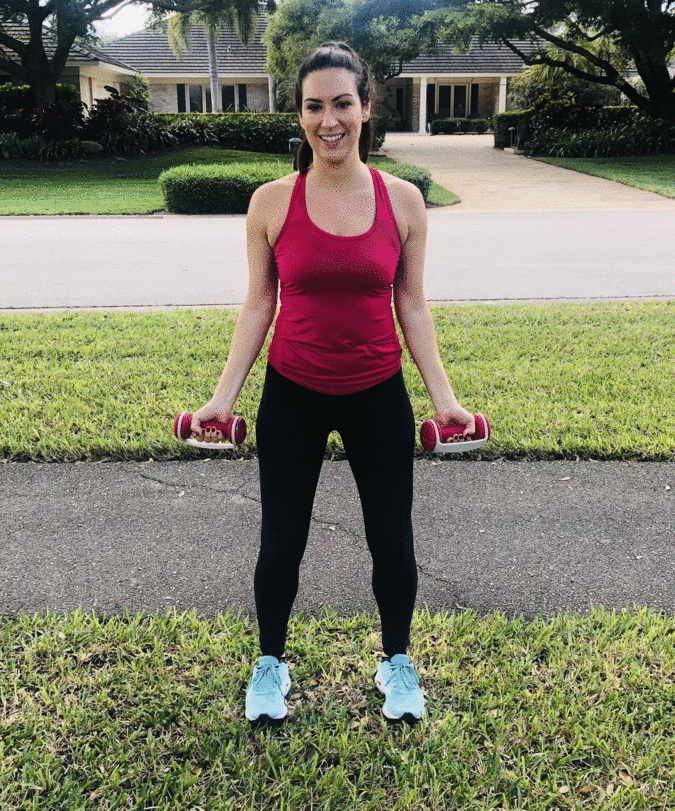31 Day Walking Workout With Strength Training and Stretching
Welcome to the Start TODAY Walking Challenge sponsored by Easy Spirit. Sign up for our free Start TODAY newsletter to join the challenge with Al Roker and receive daily inspiration sent to your inbox. Then, join us on the Start TODAY Facebook group for tips and motivation, to connect with others following the plan — and to get real-time advice from trainer Stephanie Mansour!
A change of seasons is the perfect time to start — or shake up — your fitness routine. Don’t wait until January to start reaching for your health goals! Join 100,000+ Start TODAY members for a 31-day walking challenge to reap the physical and mental health benefits of walking.
Not only are we giving you two ways to walk — leisurely and with intervals — but also we’re adding in a weekly stretch challenge. Then halfway through the month, we add in a 10-minute strength training workout with some basic exercises.
As the weather gets colder, for those of you who are walking outside you may start hunching forward or feeling more stiff, there are stretches you can do during the first few steps of your walk to limber up!
And for those of you who’re looking to improve your strength, balance and muscle mass, we’ve devised a five-exercise strength training workout that can be done in the middle of your walk, at the beginning, or at the end of your walk. The goal is to start including this halfway through the month!

>> Download and print the plan!
A 31-day walking plan for fall
The first half of the plan we will focus on making 20-minute daily walks a habit. The weekly stretch routines will help you loosen up those muscles and release any stress or anxiety that you’ve been carrying. The second half of the plan we will incorporate a strength-training routine to support your cardio plan.
Although simple, walking has tons of health benefits, both physical and mental. A daily walk is associated with cardiovascular health benefits and weight loss, and if done consistently, walking can improve your cholesterol levels and blood pressure and slow bone decay.
Walking is also an accessible mental-health tool that we can all employ. Walking has been shown to relieve stress and increase mindfulness if done in an intentional way, and can even help treat symptoms of depression and anxiety. Of course, walking can always be done on a treadmill or an indoor track, but if the weather permits where you live, grab a water bottle and get outside for some fresh air. Giving yourself the time to take a stroll and absorb your surroundings — even if it’s just for a few minutes each day — can do wonders for your mental health.
Walking workout 1: 20-minute slow walk. Get moving and focus on breathing, form and clearing your head. Breathe in through your nose and out through your mouth. Pump your arms as you walk. Step one foot in front of the other mindfully, pressing down with your full foot and being cognizant of not walking on your toes or striking too hard with your heel. If you’re feeling bored with this, try taking a different route or finding an inclined surface to vary your routine. But make sure to keep it simple and focus on your breathing.
Walking workout 2: 20-minute speed-it-up walk. We’ll speed things up slowly and mindfully. First, clock yourself at a normal pace for 4 minutes. Then speed up and walk briskly for 4 minutes. Alternate for 20 minutes total. If this starts to get easy, quicken your pace or increase the amount of time you spend walking briskly. Or, if you don’t like keeping track of time, keep track by blocks or mileage. After four blocks of regular pacing, speed up for four blocks.
Stretching weekly challenge
At the start of your walk, loosening up your body and performing dynamic stretching (which means you move while you stretch) can help you to walk more comfortably and help prevent injury. That’s why I provided four super-simple stretches that you can do the second you take your first step on your walk!
Week 1: Shoulder rolls
While walking, roll your shoulders up towards your ears, back, and down. Roll them backwards 10 times, and then roll your shoulders forwards 10 times. Do this at the start of your walk!
Week 2: Neck circles
As you start walking, drop your chin towards your chest gently. Then roll your head so your right ear reaches towards your right shoulder, then tilt your head back so that you’re looking up, and finally drop your left ear towards your left shoulder. Repeat this neck circle 10 times, and then do this starting to the left!
Week 3: Knee hugs
This stretch is for the hip flexors and also works on balance. Hug your right knee into your chest by grabbing onto your right shin or underneath your right hamstring. The idea is to draw the knee closer to your chest to feel a compression in the hip flexor. Then place the leg down, and hug the left knee in towards your chest. Repeat this 10 times (so five times per side) at the start of your walk to improve mobility in the hip joint.
Week 4: Point & flex
Before you take your first step, place your hands on your hips or hold onto something to help with balance. Extend your right leg in front of you off the ground. Point the toes and then flex the toes. Do this 10 times to stretch the hamstrings and calves. Then switch to the left leg.
>> Download and print the plan!
Strength training routine
After two weeks of doing the walking workouts, we’re going to add in strength training a few days a week. We will focus on mastering form and building foundational strength.
Strength training won’t only help build muscle; it can also help prevent injury and reduce pain while performing cardio exercises. Adding this ten-minute circuit to your walking workout will increase your strength, tone your muscles and up your calorie burn.
10-minute strength training circuit
Squat: Stand straight with your hands on your hips. Open your feet as wide as your hips. Bend your knees and sit back into a squat, then press down through the heels to come up to standing. Repeat 10 times.

Pushups (knees or on countertop): If typical push-ups are too much for you, try doing a modified pushup on your knees. Start on hands and knees with your knees as wide as your hips and your hands as wide as your shoulders. Then scoot your knees back about a foot, keeping your shoulders over your wrists. Pull the abs in and bend the elbows out to the sides into a push-up, then press back up. For an easier modification, stand at a countertop with your feet a few feet away from the counter. Place your hands shoulder-width apart on the counter, and do push-ups from here. Repeat 10 times.

Tricep dips: Find an elevated surface, like a chair, curb or porch step, and sit on the edge. Hold onto the edge of the surface with your fingers pointing towards your body. Keep your legs out in front of you with knees slightly bent. Move your butt away from the edge so that you are no longer sitting, holding yourself up with your arms. Bend both arms, lowering your body towards the ground, then push yourself back up. Repeat 10 times.

Bicep curls: Stand with knees bent slightly and hold a weight in each hand. Rest your arms by your sides. Bend at the elbows, bringing your forearms towards your shoulders. Repeat 10 times.

Lateral raise: Stand with knees bent slightly and hold a weight in each hand. Rest your arms by your sides. Slowly lift your arms out to the sides of your body, parallel to the floor, in a “T” position. Lower your arms to your sides. Repeat 10 times.

Plank: Get into a pushup position with your arms shoulder-width apart. Tighten your core so that your back doesn’t arch. Hold it for 30 seconds, or however long you’re able to, then repeat 3 times.

>> Download and print the plan!
Related:
This article was originally published on TODAY.com

